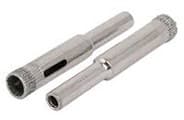Cement Mixers
Cement mixers, also known as concrete mixers, are machines used for mixing cement, water, and aggregates to create concrete. They are widely used in construction projects, including building foundations, roads, bridges, and other structures that require concrete as a primary material. Cement mixers come in different types and sizes, each designed for specific applications. Here are some common types of cement mixers:
1. Drum Mixer: Drum mixers are the most common type of cement mixers. They consist of a rotating drum mounted on a frame, which contains blades or fins inside. The drum rotates to mix the cement, water, and aggregates thoroughly. Drum mixers can be further classified into two categories:
o Tilt Drum Mixer: In tilt drum mixers, the drum can be tilted to pour out the concrete mixture. This design allows for easy loading and unloading of materials.
o Non-Tilt Drum Mixer: Non-tilt drum mixers have a fixed drum that cannot be tilted. These mixers are generally used in situations where the concrete is discharged directly into a chute or a conveyor system.
2. Pan Mixer: Pan mixers have a stationary mixing pan and rotating blades or paddles inside. The mixing action is achieved by the rotation of the blades, which lift and tumble the materials in the pan. Pan mixers are suitable for mixing smaller quantities of concrete and are commonly used for laboratory testing and smaller construction projects.
3. Twin-Shaft Mixer: Twin-shaft mixers feature two counter-rotating shafts with paddles or blades that intermesh as they rotate. This design provides a more intense mixing action, ensuring thorough and homogenous mixing of the concrete. Twin-shaft mixers are commonly used for large-scale construction projects and in concrete batching plants.
4. Reversing Drum Mixer: Reversing drum mixers have a rotating drum that can tilt in both directions. This allows for efficient mixing in one direction and easy discharge in the other direction. Reversing drum mixers are suitable for projects requiring multiple batches of concrete.
5. Continuous Mixer: Continuous mixers are used for producing a continuous flow of concrete. They have a system where cement, water, and aggregates are continuously fed into the mixer, and the concrete mixture is discharged as a steady flow. Continuous mixers are commonly used in applications where a large volume of concrete is needed, such as road construction and high-rise buildings.
Cement mixers can be powered by electricity, gasoline engines, or diesel engines, depending on the specific model. Portable cement mixers are available for smaller projects or remote locations, while larger stationary mixers are used for larger-scale construction sites.
When operating a cement mixer, it is important to follow safety guidelines, such as wearing appropriate personal protective equipment, keeping hands and clothing clear of moving parts, and properly securing the mixer during operation. Regular maintenance and cleaning of the mixer are necessary to ensure its proper functioning and longevity.
Cement mixers are valuable tools that simplify and streamline the process of mixing concrete, providing efficient and consistent results in construction projects of various sizes and complexities.





